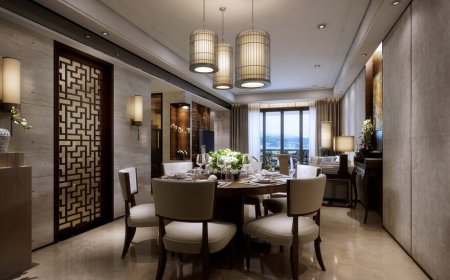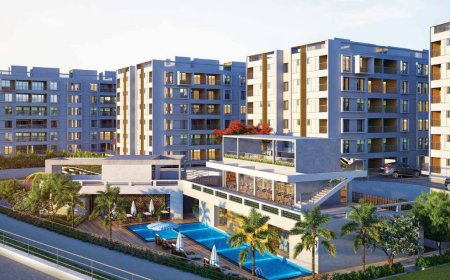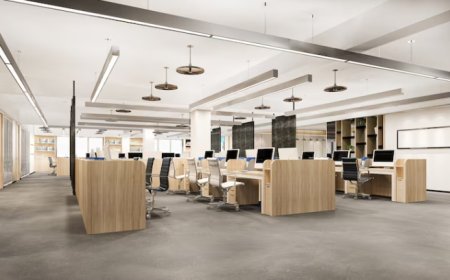Dining Room Design: How to Create a Stylish and Functional Space for Gathering
Discover dining room design ideas that blend style and function. Let Lisa Merkle Design help you create a space perfect for meals, memories, and more.

In todays homes, the dining room serves as more than just a place to eatits a hub for connection, celebration, conversation, and comfort. Whether you're hosting elegant dinner parties, enjoying casual family meals, or using the space for work or hobbies, a well-thought-out dining room design can dramatically elevate your home's style and functionality.
In this guide, well explore the principles of successful dining room design, including layout, lighting, furniture, and dcor. Whether youre redesigning an existing space or starting from scratch, working with a professional like Lisa Merkle Design ensures a dining area that is both timeless and tailored to your lifestyle.
Why Dining Room Design Matters
The dining room is one of the most versatile spaces in any home. It brings people together and reflects your personal taste and hospitality. Good dining room design balances function and formit's about creating a setting thats welcoming and beautiful while also meeting everyday needs.
From an aesthetic point of view, the dining room is often adjacent to or open to the kitchen or living room, making it a key player in establishing visual flow throughout your home. Well-designed dining rooms add cohesion, elevate ambiance, and make daily meals or special occasions more memorable.
Step One: Understand Your Needs and Space
Before choosing furniture or colors, start by defining how youll use your dining room. Is it formal or casual? Is it used daily or only for special occasions?
Ask Yourself:
- How many people do you need to seat regularly?
- Do you want it to double as a work or craft space?
- Do you host large gatherings often?
- Whats your existing home styletraditional, modern, coastal, eclectic?
Identifying your goals at the beginning of your dining room design process will help you make smart choices for layout, furniture, and accessories.
Layout: Make the Most of Your Space
Dining room layout is all about flow. Whether you have a compact corner nook or a spacious open-plan area, how you arrange your table, chairs, and other furniture will affect both functionality and visual appeal.
Layout Tips:
- Center the Table: Place the table under a light fixture or centered in the room for balance.
- Leave Space: Aim for at least 36 inches between the table edge and wall or furniture for easy movement.
- Scale Appropriately: Choose a table size that complements the rooms proportions.
- Consider Shape: Round tables are great for small spaces; rectangular tables work well in longer rooms.
Professional designers like Lisa Merkle Design can help you create a layout that maximizes space without feeling cramped or awkward.
Choosing the Right Dining Table
The dining table is the anchor of your dining room design. It should be both visually appealing and practical for your lifestyle.
Key Considerations:
- Material: Wood adds warmth and tradition, glass offers a modern look, and marble or stone brings luxury.
- Shape: Rectangular tables seat more people; round or oval tables encourage conversation.
- Extendable Options: Ideal for hosting larger gatherings without taking up everyday space.
Make sure the table's height, width, and finish work with your chairs and overall room aesthetic.
Chairs: Comfort Meets Style
Dining chairs should be comfortable enough to linger in and stylish enough to enhance the rooms design. Mixing and matching chair styles or upholsteries can add personality.
Chair Selection Tips:
- Comfort First: Padded or upholstered seats make long meals more enjoyable.
- Mix Materials: Consider wood frames with fabric seats or sleek metals for modern flair.
- Balance Design: Coordinate chair style with the tables form and finish for a unified look.
Dont forget armchairs for the heads of the table, especially if you're going for a more formal dining room design.
Lighting: Set the Mood
Lighting plays a huge role in setting the tone of your dining room. Whether you want an intimate, cozy atmosphere or a bright, open feel, your lighting choice makes all the difference.
Lighting Tips:
- Central Fixture: A chandelier or pendant light should hang 3036 inches above the table.
- Dimmer Switches: Essential for adjusting ambiance based on the occasion.
- Layered Lighting: Add wall sconces, table lamps, or floor lamps for depth and flexibility.
- Statement Pieces: Choose lighting that complements your dcor but also stands out as a centerpiece.
If you're unsure how to pair lighting with your room layout and furniture, Lisa Merkle Design can guide you through lighting selection that enhances the spaces overall mood and function.
Color and Wall Treatments
The walls in your dining room offer a great opportunity to add personality. From bold paint colors to custom wall treatments, they help define the style of your space.
Popular Options:
- Accent Walls: Add a pop of color or texture behind the dining table.
- Wallpaper: Choose elegant patterns, florals, or modern geometrics for added interest.
- Wainscoting or Paneling: Adds dimension and a timeless touch.
- Paint Colors: Rich tones like navy, emerald, or charcoal create drama; lighter hues keep it airy and bright.
The right wall treatment ties together furniture, lighting, and accessories into one cohesive dining room design.
Flooring and Rugs
Your choice of flooring contributes to both the look and acoustics of the dining room. Adding an area rug can anchor the furniture and soften sound.
Flooring Tips:
- Hardwood: A timeless and durable choice.
- Tile or Stone: Easy to clean and ideal for warmer climates.
- Rugs: Select a rug thats large enough for chairs to remain on it, even when pulled out.
Patterns and textures in rugs can add warmth and balance to minimalist furniture or simple color palettes.
Dcor and Styling
Finishing touches make your dining room feel complete. Centerpieces, artwork, mirrors, and greenery add personality and visual balance.
Styling Suggestions:
- Centerpieces: Try candles, fresh flowers, or a sculptural bowl.
- Artwork: Choose a large statement piece or a gallery wall that reflects your personality.
- Mirrors: Enhance natural light and create the illusion of more space.
- Plants: Bring in life and color with greenery in floor planters or tabletop vases.
Your dcor should enhance the rooms ambiance without creating clutter.
Storage Solutions
A well-designed dining room includes space for storage not just for style, but also for function.
Storage Ideas:
- Buffets or Sideboards: Ideal for storing dishes, linens, and serving ware.
- Bar Carts: Add flair and utility for entertaining guests.
- Built-ins: Customized cabinetry can elevate the design while adding practical storage.
Let Lisa Merkle Design help you find the right storage solutions that seamlessly blend into your rooms overall look.
Open-Concept Dining Spaces
If your dining room flows into your kitchen or living area, maintaining design harmony is key. Use area rugs, lighting, and furniture placement to define the dining space while keeping the design cohesive across zones.
Tips for Open Layouts:
- Match finishes across furniture pieces.
- Keep color palettes consistent between spaces.
- Use lighting to separate yet unify (e.g., a bold chandelier over the dining area).
Final Thoughts
A thoughtfully designed dining room doesnt just look good it invites people to come together, share meals, and create memories. Whether youre building a new home or transforming an outdated space, investing time and intention into your dining room design is worth every effort.




























